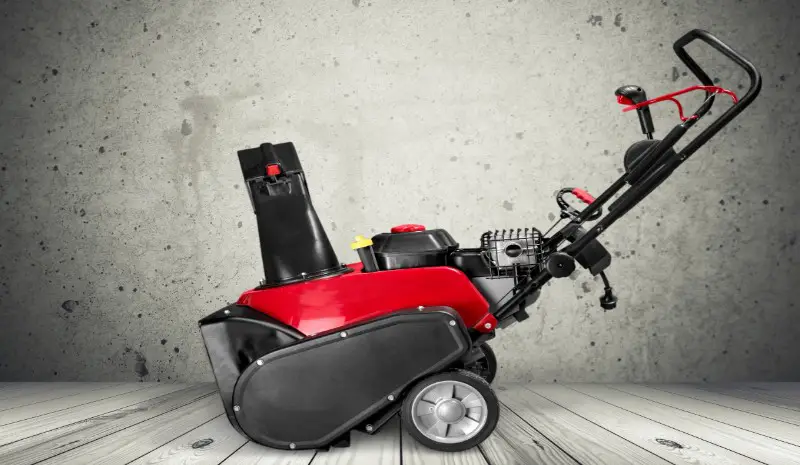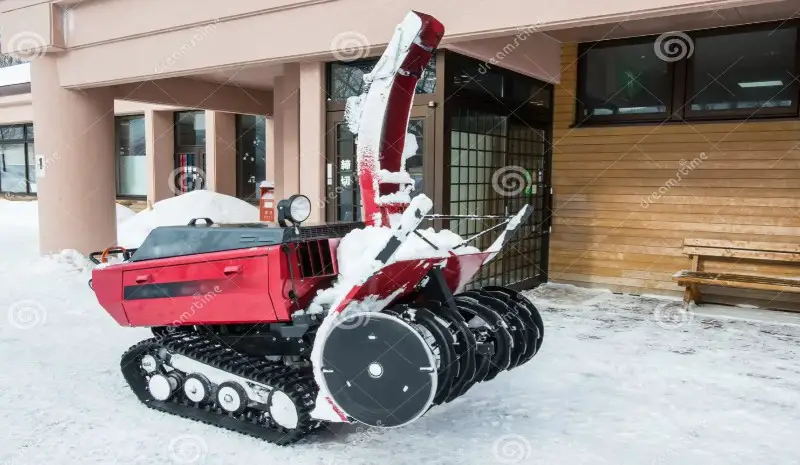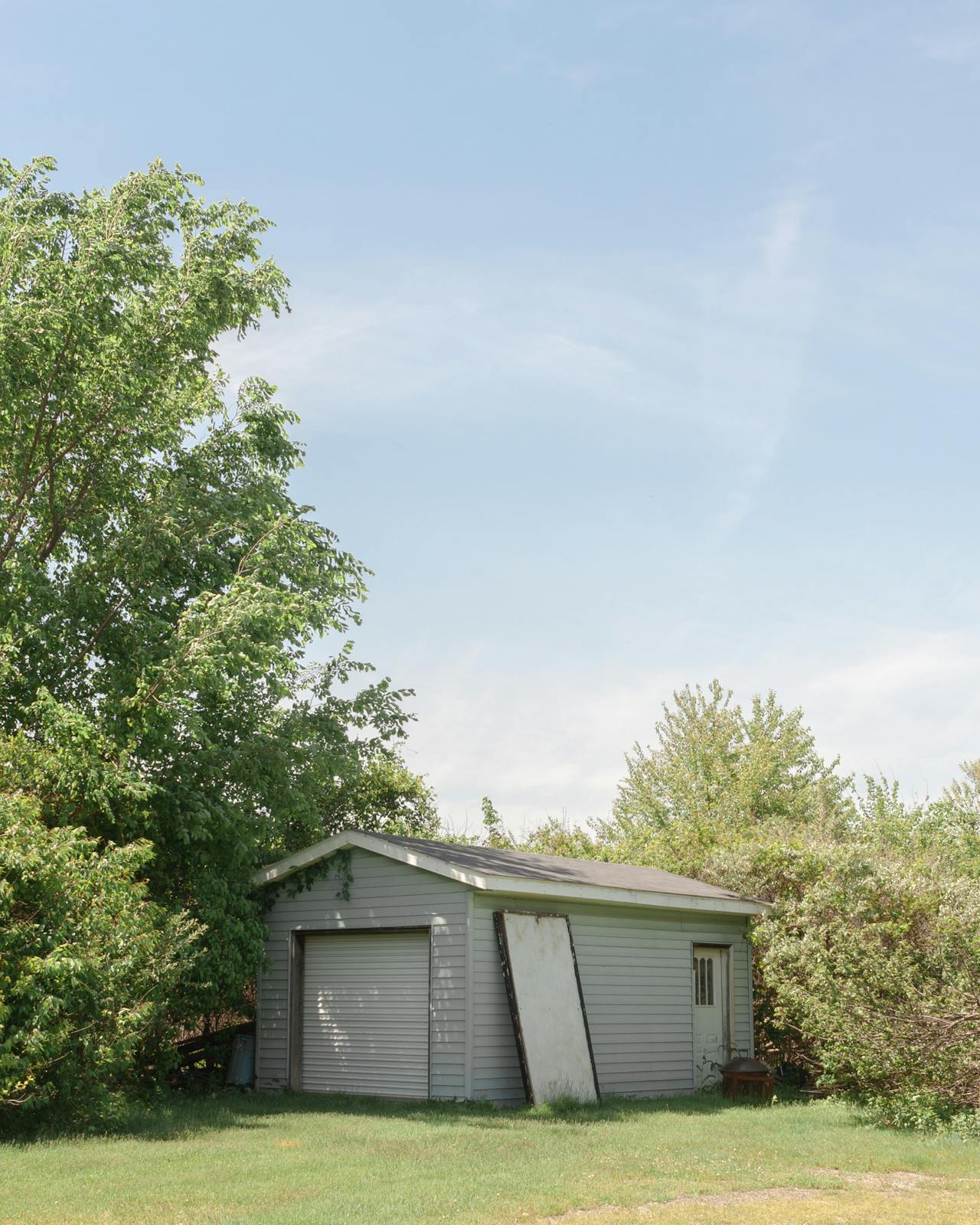Have you ever wondered how much a snow blower weighs? It’s a valid pondering, especially if you’re planning to buy one. The weight of a snow blower can greatly affect its maneuverability and versatility, and this information can help you determine if the model you’re considering is right for you.
The weight of a snow blower is a crucial factor that affects several aspects of its performance. For starters, a lighter snow blower tends to be more maneuverable, allowing you to navigate around tight corners and obstacles with less effort. This can make your snow-clearing task more efficient and less time-consuming, increasing your productivity.
However, a lighter machine may lack the necessary power to handle deep or wet snow properly. On the other hand, a heavier snowblower tends to be more stable and has a greater weight-to-traction ratio, enabling it to plow through heavy snow with ease. However, a heavier snow blower may be more challenging to maneuver, causing fatigue and strain, especially if you have to clear a large area.
The ideal weight of a snow blower depends on the specific conditions of your snow-clearing task, such as the snow type, depth, and terrain. It’s essential to consider the weight factor when selecting a snow blower to ensure it meets your needs and preferences.
In this article, we’ll go over the factors that affect snow blower weight. So, get ready to learn everything you need to know about snow blower weight and find out which one fits your specific needs.
Factors Affecting Snow Blower Weight

The weight of a snow blower is influenced by several factors, including engine size and type, clearing width, auger size and type, tire and track type, and drive type. The engine size and type of a snow blower significantly affect its weight. Generally, larger engines tend to weigh more than smaller ones, and gas-powered engines tend to be heavier than electric ones. However, gas-powered engines provide more power and are better suited for heavy-duty snow clearing. The clearing width, or the width of the clearing path that a snow blower can handle, also affects its weight.
Generally, wider clearing widths require larger and heavier machines. For instance, a snow blower with a clearing width of 24 inches will typically weigh more than one with a 20-inch clearing width. Another factor affecting snow blower weight is the size and type of the auger, the spiral-shaped component that scoops up the snow and ice. Snow blowers with larger augers tend to weigh more than those with smaller ones and those with metal augers weigh more than those with plastic ones. The tire and track type of a snow blower also impacts its weight. Snow blowers with tracks, instead of tires, tend to be heavier due to the additional track components.
Additionally, models with larger or sturdier tires or tracks also tend to weigh more than smaller or less robust ones. Lastly, the drive type of a snow blower, whether it’s single-stage, two-stage, or three-stage, also affects its weight. Two-stage and three-stage models tend to be heavier than single-stage models, as they have additional components and features for more efficient and thorough snow clearing.
Engine Size and Type
The engine size and type are significant factors that affect the weight of a snow blower. Generally, the larger the engine, the heavier the machine. A snow blower with a more powerful engine will be better equipped to handle heavy, wet snow and clear larger areas more quickly.
However, larger engines also require more fuel, which adds to the overall weight of the machine. Additionally, engine type can impact weight. Two-stroke engines tend to be lighter than four-stroke engines, but they are also less fuel-efficient and may have a shorter lifespan. On the other hand, four-stroke engines are generally more durable and fuel-efficient but can add to the weight of the snow blower.
If you’re looking for the best gas snow blower for your winter needs, look no further. We have compiled a comprehensive list of top-rated models in our article “Best Gas Snow Blower Reviews & Buyer’s Guide“. Whether you’re dealing with heavy snowfall or simply want to make your snow-clearing tasks easier, this guide will help you make an informed decision.
Clearing Width
The clearing width of a snow blower is the measure of the width of the area the machine clears with each pass. Snow blowers with larger clearing widths can clear a larger area in less time, but they also tend to be heavier and less maneuverable.
Additionally, snow blowers with wider clearing widths can have higher horsepower and greater intake height to be able to handle heavier snowfalls. Clearing width can vary significantly by model, usually ranging from around 18 inches to 45 inches. Here are some guidelines for selecting the proper clearing width for your needs:
- A clearing width of 18 to 22 inches is suitable for light snowfalls of up to 6 inches.
- Clearing widths of 22 to 24 inches are appropriate for moderate snowfalls of up to 10 inches.
- Clearing widths of 24 to 30 inches are adequate for heavier snowfalls of up to 16 inches.
- Clearing widths greater than 30 inches are best for large areas with frequent and heavy snowfalls.
Keep in mind that wider clearing widths may also limit the snow blower’s ability to navigate around obstacles, such as trees and curved paths, so take this into consideration when selecting the perfect model for your snow-clearing needs.
Auger Size and Type
- The auger is one of the most crucial components of a snow blower, as it’s responsible for scooping up the snow and ice and discharging it through the chute. The size and type of auger can greatly affect the snow blower’s weight.
- Single-stage snow blowers typically have smaller augers, which are usually around 8-12 inches in diameter and are made of plastic or metal. These models are best suited for light to moderate snowfall, as they’re not as powerful as two-stage models.
- Two-stage snow blowers, on the other hand, have larger and more powerful augers, which are usually around 14-18 inches in diameter and made of sturdy metal. They’re designed to handle heavy and wet snow, as well as ice and packed snowdrifts.
- There are also three-stage snow blowers that feature an additional accelerator that helps break up ice and snow. These models typically have an auger similar in size to a two-stage snow blower.
- Aside from size, there are also different auger types to choose from, including:
- Straight augers: These are standard augers that work by spinning around and pulling in the snow.
- Serrated augers: These have teeth-like edges that help break up hard and icy snow, making them ideal for clearing large driveways and areas.
- Ribbon augers: These have a spiral shape and work by gently lifting the snow from the surface, making them ideal for use on sensitive surfaces like decks and patios. -The size and type of auger can greatly affect the weight and performance of a snow blower.
It’s essential to choose the right auger based on your snow-clearing needs and the nature of the surfaces you’ll be clearing.
Tire and Track Type
The tire and track type of a snow blower is an important factor that affects its weight. Tires provide better traction and maneuverability on smooth surfaces, such as concrete and asphalt, while tracks offer more stability and control on uneven, steep, or slippery terrain, such as gravel, ice, and snow banks.
However, the type of tire or track also adds weight and complexity to the snow blower, which may affect its efficiency and portability. For example, pneumatic tires are lighter and easier to replace than solid tires, but they may puncture or deflate under heavy use. Similarly, steel tracks are more durable and powerful than rubber tracks, but they are also louder and more expensive. Some snow blower models offer both tire and track options, allowing users to choose based on their specific needs and preferences.
Ultimately, it’s crucial to consider the tire and track type when purchasing a snow blower, as it greatly impacts its performance and versatility.

Drive Type
Drive type refers to the mechanism by which power is transmitted from the snow blower engine to the wheels or tracks. There are two main types of drive systems: wheel and track.
Wheel-drive System: Most snow blowers use a wheel-drive system, which features a pair of wheels that propel the machine forward. The wheels are generally made of durable rubber and are designed to grip the surface, providing excellent maneuverability. Some wheel-drive systems use a friction disc, which allows the operator to adjust the speed and direction of the machine based on the amount of pressure applied to the drive handle. This is commonly known as friction-drive.
Track-drive System: A track-drive system, also known as a tank-drive system, uses tracks rather than wheels to move. This system is commonly used for heavy-duty snow clearing. The tracks provide exceptional traction, allowing the machine to easily navigate steep slopes and uneven terrain. However, track-drive systems generally have a higher overall weight, which can make them harder to maneuver.
When selecting a snow blower, the drive type is an important consideration, as it affects the machine’s overall mobility and performance. Wheel-drive systems are generally preferred for lighter snow and areas with less rough terrain. However, if you live in an area that receives heavy snowfall and need to clear steep slopes or uneven terrain, a track-drive system may be a better choice.
If you’re looking for the best cordless snow shovel to accompany your winter power walking sessions, look no further! Head over to “Best Cordless Snow Shovel for Winter Power Walking” to discover the perfect tool to keep your paths clear and make your outdoor activities more enjoyable.
Snow Blower Weight by Popular Brands
Now let’s take a closer look at the weight of popular snow blower brands:
Honda is a well-known brand in the power equipment industry, and its snow blowers are no exception. The average weight of a Honda snow blower ranges from 150 to 200 pounds, depending on the model and specifications. For example, the Honda HSS1332ATD two-stage snow blower weighs 275 pounds, while the Honda HS720AS single-stage snow blower weighs only 90 pounds.
Toro is another popular brand that offers a variety of snow blower options. The weight of Toro snow blowers ranges from around 90 pounds for the electric Power Shovel model to up to 400 pounds for some of the larger commercial-grade two-stage models. The Toro Power Max HD 1028 OHXE, for instance, weighs 286 pounds.
Craftsman snow blowers are known for their reliability and durability. The weight of Craftsman snow blowers ranges from around 80 to 300 pounds for two-stage models. The Craftsman SB450 model weighs 240 pounds, while the smaller Craftsman CMXGBAM1054542 electric snow blower weighs only 25 pounds.
Husqvarna is a high-end brand that offers premium snow blowers with a price range to match. The weight of Husqvarna snow blowers ranges from 200 to 350 pounds for two-stage models, with some models such as the ST430T weighing as much as 350 pounds. However, Husqvarna also offers a lightweight electric model, the ST151, which only weighs 50 pounds.
Ariens snow blowers are known for their power and efficiency. The weight of Ariens snow blowers varies widely depending on the model, ranging from around 100 pounds for the compact Path-Pro single-stage model to over 500 pounds for the larger commercial-grade models. For example, the Ariens Platinum 30 SHO two-stage model weighs 250 pounds.
Remember that the weight of a snow blower is just one factor to consider when choosing the right model for your needs, but it’s a crucial one for ease of use, storage, and transportation purposes.
Conclusion
Knowing the weight of a snow blower is crucial information when shopping for a new one. It can help you determine if the equipment is appropriate for your needs or if it’s too heavy or too light for your intended use. The weight of a snow blower is affected by several factors, including engine size, clearing width, auger size, tire and track type, and drive type. It’s important to consider all these factors before making a purchase, so you can ensure that you find a model that is both effective and easy to use.
In conclusion, we hope this article has shed some light on the topic of snow blower weight. Remember to carefully consider the factors that affect weight when making your decision, and don’t be fooled by the notion that bigger is necessarily better. It’s always a good idea to consult the manufacturer’s specifications, as well as to read customer reviews, before settling on a particular model. With the right amount of research, you’ll be able to find a snow blower that’s the perfect fit for you and your snow-clearing needs.
Frequently Asked Questions
What is a single-stage snow blower?
A single-stage snow blower uses an auger to pick up the snow and throw it out of the chute in one motion. These are typically smaller and less expensive than two-stage models and work well for light to moderate snowfall.
What is a two-stage snow blower?
A two-stage snow blower uses an auger to pick up the snow and feed it to an impeller, which then throws the snow out of the chute. Two-stage models are larger and more powerful, making them better for larger driveways and heavier snowfall.
What is an electric snow blower?
An electric snow blower runs on electricity and requires a power outlet or extension cord. These models are smaller and quieter than gasoline-powered models, and are ideal for light snowfall and small paved areas.
What is a cordless snow blower?
A cordless snow blower runs on a rechargeable battery and does not require a power outlet or extension cord. These models are typically less powerful than electric and gasoline models but are great for small properties and quick cleanups.
What is a clearing width?
A clearing width is the width of the snow blower’s intake or the area that comes into contact with the snow. This affects the amount of snow that can be cleared with each pass and can range from 12 inches to 36 inches on some models.
What is an auger?
An auger is a spiral-shaped blade or drum that rotates and scoops up the snow, ice, or debris, and feeds it to the impeller or discharge chute.
What is a track snow blower?
A track snow blower uses tracks instead of wheels for traction. This design enhances maneuverability and traction in deep or uneven snow but typically comes at a higher price.
What is a heated handle?
A heated handle is a feature that utilizes a heating element in the handles of the snow blower to keep the grips warm and comfortable during operation, especially in cold weather conditions.
What is a headlight on a snow blower?
A headlight is a feature that provides illumination in low-light or dark conditions, allowing the user to see the path ahead and avoid obstacles.
Why is it important to adjust the skid shoes on a snow blower?
Skid shoes are adjustable plates that raise or lower the height of the snow blower’s auger. Adjusting them ensures that the snow blower doesn’t scrape or damage the surface below, such as concrete or asphalt, while also ensuring efficient snow clearing.

